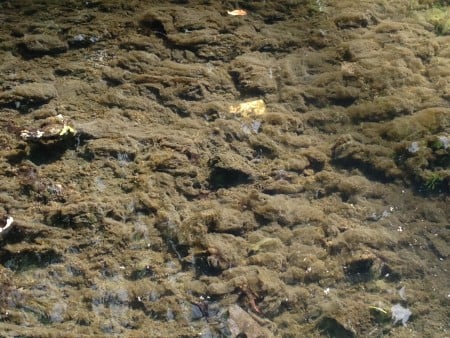Scenes from First Hudson River Patrol of 2015 #followtheboat
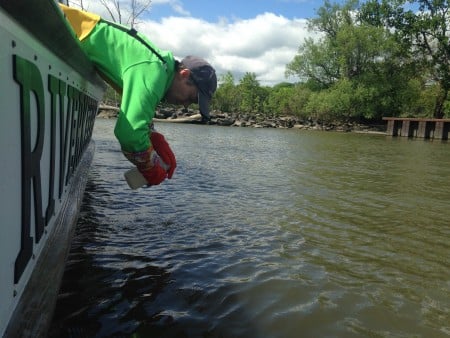
Carol grabs a sample at Newburgh's public boat launch. A couple fishermen were looking on, curiously, and when I called in a missing pollution discharge public notification sign that was supposed to be placed at one of the city's combined sewer outfalls, I learned from the city that all the signs are being improved and replaced. One improvement: They'll face both the shore and the water. Newburgh has excellent leadership when it comes to water issues. Nice job, Newburgh.
View more images on our Flickr site
By the time I boarded the Riverkeeper patrol boat in Garrison around 9 a.m. on May 13, Capt. John Lipscomb and Lamont Doherty Earth Observatory research assistant Carol Knudson had already traveled from Ossining and gathered three water samples from Peekskill, Annsville Creek and Fort Montgomery. Here’s what I saw, as we continued on to Kingston for the third day in our monthly four-day water quality sampling patrol.
There’s more on Twitter, where you can follow @danshapley for occasional posts or @riverkeeper and #followtheboat for consistent updates. Also check out @riverkeeper on Instagram, and @HudsonRiverkeeper on Facebook.
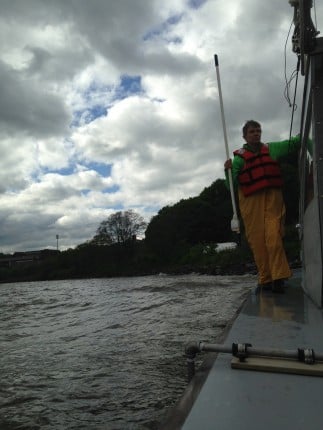
Carol Knudson, Lamont Doherty Earth Observatory Research Assistant, grabs a heroic sample in choppy waters at the West Point sewage treatment plant outfall. (Lamont’s Dr. Andy Juhl and CUNY Queens’ Dr. Greg O’Mullan are our science partners for our Water Quality Program.) A $70 million upgrade has been proposed to this plant, which was last upgraded in 1972. It’s under a Department of Environmental Conservation consent order after spilling 660,000 gallons of raw sewage following a pump failure two years ago. There’s also work to be done on the pipes that carry sewage to the plant: With a combined sewer system that carries both sewage and rain that runs off the extensive paved areas on the military academy campus, sewage is discharged without full treatment when the pipes are overwhelmed during wet weather.
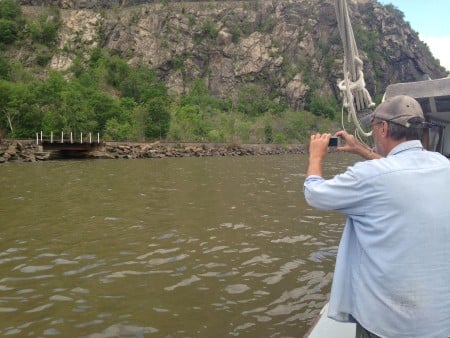
Capt. John documents new and ongoing cases while on patrol. In this case, he’s checking out the crumbling railroad bridge south of Storm King Mountain that was the subject of Riverkeeper’s investigation and numerous news stories. We saw no signs it has been repaired. We later saw a long crude oil train headed south toward it.

Carol grabs a sample at Newburgh’s public boat launch. A couple fishermen were looking on, curiously, and when I called in a missing pollution discharge public notification sign that was supposed to be placed at one of the city’s combined sewer outfalls, I learned from the city that all the signs are being improved and replaced. One improvement: They’ll face both the shore and the water. Newburgh has excellent leadership when it comes to water issues. Nice job, Newburgh.
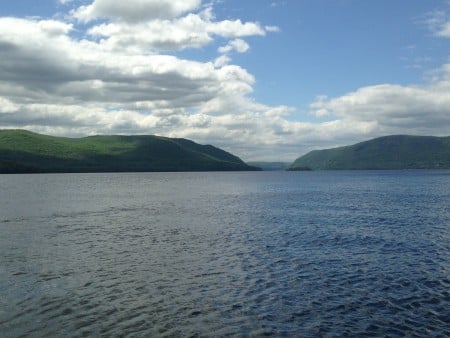
Ahhhhh. That view of the Highlands. No one has a view like Newburgh. As John was telling me, during dry spells like we’re going through, the Hudson most resembles a fjord, with relatively little freshwater entering the estuary from its watershed. Nowhere does the Hudson resemble a fjord more than here.
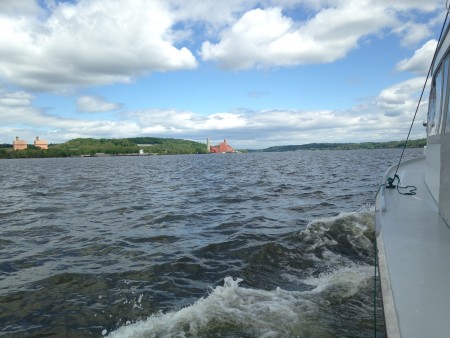
A dinosaur sighting! And a zombie! The dinosaur natural-gas fired Roseton power plant sits to the left, and the zombie — brought back from the dead — Danskammer to the right. Riverkeeper has challenged both the Public Service Commission and Department of Environmental Conservation for supporting the re-starting of Danskammer. Henry Hudson’s crew supposedly gave Danskammer Point its name, the “Devil’s dance chamber,” because the local Lenape people, whom they labeled devils, danced there. What’s Dutch for zombie?
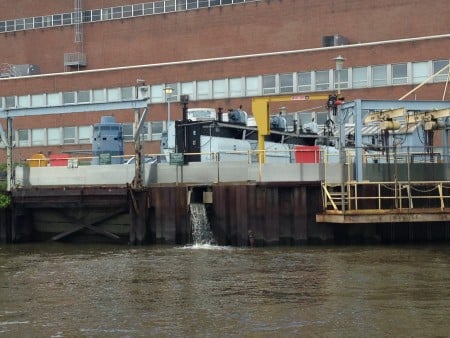
Riverkeeper has long argued that the old fossil fuel and nuclear plants of the Hudson River are too destructive to river life. This little jet of water is the only visible evidence of Roseton and Danskammer’s weapons of mass destruction: their cooling water systems. Along with Hudson River water, the plants sucked through and killed 452 million fish every year, more than 60% of them river herring. The fish that are too big to be sucked through the plant are caught on “trash screens” and this jet of water would be used to wash them off the screens when Danskammer is in operation.
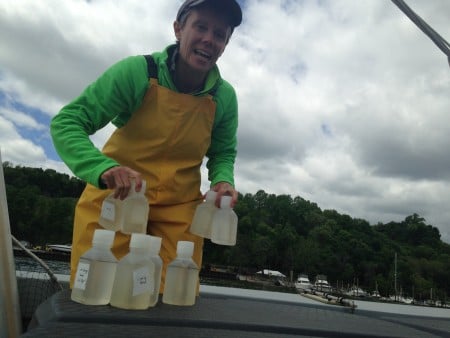
In the vicinity of New Hamburg, Carol prepared her second batch of samples for processing in our IDEXX Enterolert lab, housed aboard the R. Ian Fletcher. Whether we’re taking samples from the boat or community scientists are taking samples in far-flung creeks throughout the Hudson River Watershed, protocol is followed to maintain accuracy. This is one of the rare moments when the bottles are visible. Once taken out of the water, they are kept in a cold, dark place — cold, to keep bacteria from growing, and dark to keep UV light from killing bacteria. The goal is to get a snapshot of what’s in the river at the moment the sample is taken. Within four hours of the sample being lifted from the water, it’s processed by adding ingredients to support the growth only of the family of bacteria, Enterococcus, that we test for, put into IDEXX trays and sealed, and then incubated at the temperature optimal for Entero growth and survival for 24 hours.
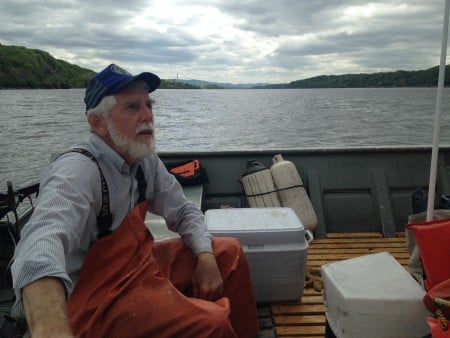
We met John Mylod, former director of Hudson River Sloop Clearwater, longtime Hudson River fishermen, conscience of Poughkeepsie, and Riverkeeper member.
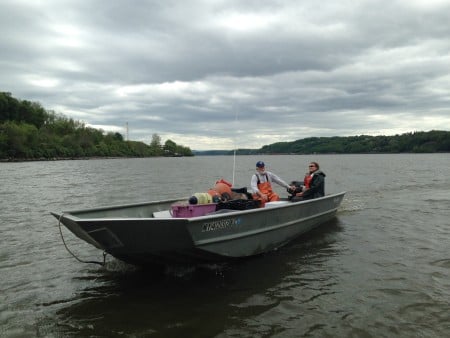
Mylod was accompanied by a Department of Environmental Conservation fisheries scientist, monitoring his catch of river herring. Word on the river is it’s been a strong herring run. (De-activated, Danskammer isn’t (at present) contributing to the river-wide decline in these species. In combination with coastwide restrictions on herring fishing in the tributaries, eliminating these fish kills will give our fish a chance to recover.)
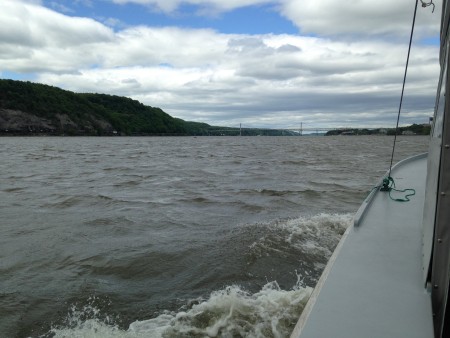
“Poughkeepsie, next and last.” It’s a phrase I hear when I commute by train. Today, it was just ringing in my head. I’ll take this commute any day. (If you look closely, you’ll see a long crude oil “bomb train” hugging the west shore.)
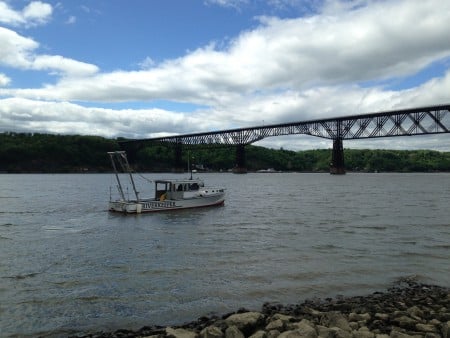
John and Carol continue on to take samples at Poughkeepsie, Norrie Point, Port Ewen and the Rondout Creek.
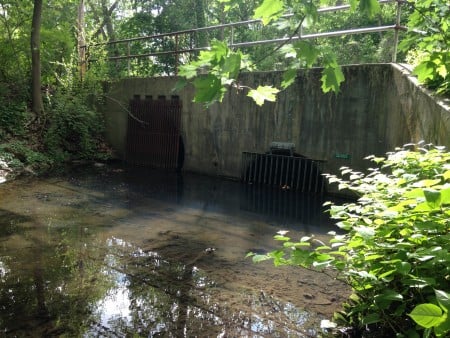
I disembarked at Poughkeepsie to grab samples in some nearby tributaries. Stay tuned for more on that investigation.
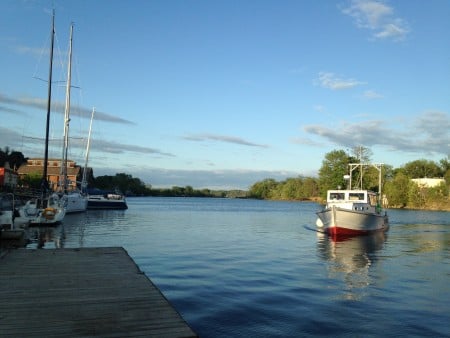
I met back up with the boat as it docked in its “home port away from home port,” the Hudson River Maritime Museum’s docks on the Rondout Creek in Kingston. The Rondout is home port to the Clearwater, and there’s a plan to build a boat-building school as part of a waterfront makeover.
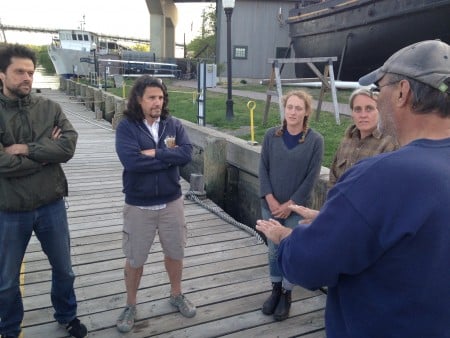
It had been a long day, but John made time to give an impromptu dockside chat to WDST’s program director Jimmy Buff, who had interviewed John earlier in the week about the Indian Point transformer explosion and oil spill, and wanted to meet face to face. Buff’s neighbor and several members of the Sloop Clearwater crew joined in. The good news: Surveys are showing a strong uptick in Atlantic sturgeon young of the year. The bad news? Well, that’s for another post.
John and Carol will be back on the boat at 6:30 a.m., headed to Waterford to complete the first of six water quality sampling patrols of the 2015 season. The logistics involved in sampling are challenging, and the hours long. But as you can see, there’s no better office for challenging, long hours.
This patrol continues, without water quality sampling, until May 20. And John will return to Catskill and Kingston at the end of the month to collect community water samples from the Catskill, Esopus and Rondout creeks, and the Wallkill River. In June, we start the cycle again with community sampling on the Pocantico River and Sparkill Creek.

